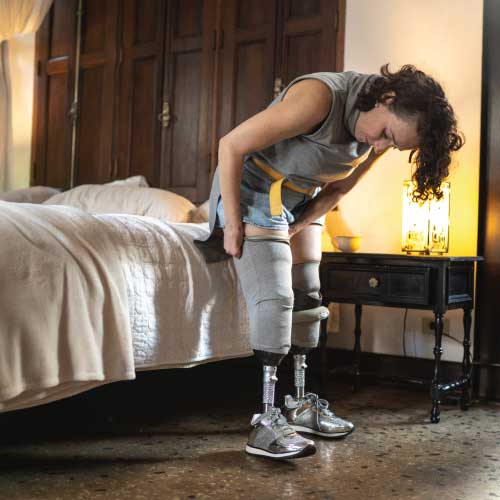New MIT Bionics Center is Key to Better Future Prosthetic Limbs
Life-changing inventions are never achieved by looking at problems through one lens. Today's advancements were made possible through interdisciplinary thinking and collaborating with experts from other fields.

For example, today's advanced prosthetic devices were made possible by understanding not only technology but also how the human body (biology) and the brain (neuroscience) work. When experts from various fields are given a chance to work together and look at issues from diverse points of view, many reap the benefits. We can expect this from MIT's new bionics center named the K. Lisa Yang Center for Bionics.
The new center was made possible by a $24 million donation from Lisa Yang, a philanthropist committed to helping people with invisible and visible disabilities. It will be a hub for MIT engineers, scientists, and designers to work together on innovative solutions to the challenges experienced by people with disabilities.
A multidisciplinary approach
Bionics paved the way for advanced prosthetic limbs that the brain can control, much like biological limbs. To achieve this, bionic developers need to meld knowledge from various fields, such as artificial intelligence, biomechanics, surgery, robotics, and design.
The new center will be a melting pot of knowledge from three MIT schools, forming an interdisciplinary unit: Science, Engineering, and Architecture and Planning. These researchers will also be expected to collaborate with surgical and clinical counterparts from Harvard Medical School, ensuring that any developments are tested rapidly to reach people in need.
The bionics center will be led by Hugh Herr, a professor of media arts and sciences at MIT's Media Lab, and Ed Boyden, the Y. Eva Tan Professor of Neurotechnology at MIT, a professor of brain and cognitive sciences, biological engineering, and media arts and sciences.
Herr, a double amputee, is a pioneer in developing bionic limbs to improve mobility for those with physical disabilities. Meanwhile, Boyden will play a critical role in integrating bionics technologies with the nervous system.
Priorities for the first four years
Researchers have already identified four priority projects for the center's first four years:
First is the development of a digital nervous system. This technology is expected to eliminate movement disorders caused by injuries to the spinal cord. It will use computer-controlled muscle activations to control limb movements while also stimulating spinal cord repair.
Second is the development of brain-controlled limb exoskeletons, which are expected to assist weak muscles as well as enable natural movement in people affected by musculoskeletal disorders and stroke.
The third is bionic limb restoration. This technology aims to restore brain-controlled movements as well as the sensations of touch and proprioception from bionic limbs.
The fourth priority is developing a mobile delivery system. This project will provide disadvantaged communities access to prosthetic services. Researchers plan to initially bring the mobile delivery system to Sierra Leone, where thousands now live with limb loss because of the country's 11-year civil war.
Although amputees increase each year in Sierra Leone, only less than 10% use functional prosthetic limbs. Researchers want to escalate production through the mobile delivery system and improve Sierra Leoneans' access to functional prosthetic limbs.
With these projects in the pipeline, the new bionics center will undoubtedly be a powerful catalyst for innovation. It is a crucial puzzle piece of Herr's and Yang's shared vision of a future in which every person can live without a disability if they so choose.










































































